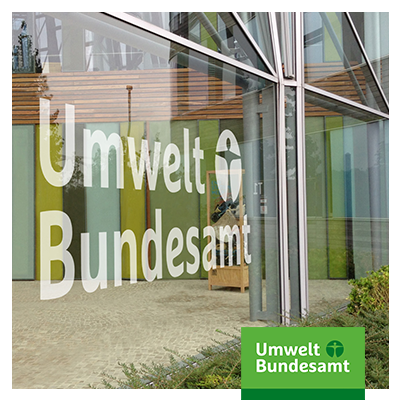Adele in Munich - an event of superlatives, also in terms of CO₂ emissions.

As a European Climate Pact Ambassador and an activist, I am on my way to Munich with a group of committed climate activists from Music Declares Emergency. On the train, we are surrounded by fans who are full of anticipation for Adele's concert series ‘Adele in Munich’. A must-see event for true Adele fans, and the enthusiasm is infectious.
Concert series of superlatives
Adele made music history in August 2024 with a series of 10 concerts in a purpose-built Adele Stadium in Munich. The dimensions of this event are breathtaking: 75,000 seats, the world's largest outdoor LED wall, production costs of over 90 million euros - one of the world's most expensive but also most lucrative concert events to date.

Residencies vs. tours
At first glance, a concert series like this - also known as a residency - seems more sustainable than a tour: less travelling for the artist and her crew, a fixed location where everything is centralised and only needs to be set up once.
But what about the fans? Initiatives such as Music Declares Emergency have long pointed out that the audience's journey to the event accounts for the largest share of CO₂ emissions at major events. The TICKET TO RIDE study published in May 2024, which analysed audience travel to German band AnnenMayKantereit's 2023 summer tour, confirmed this with figures: The journeys there caused almost 90% of total emissions. Other studies also arrive at 42-90% (A Greener Future, Plant a Seeed).
The decision to organise a central mega-concert series in one location instead of several smaller concerts in different cities could therefore prove to be a climate policy fiasco.
Collecting data to highlight shortcomings
When we finally arrive in Munich, the gigantic scale of the event becomes even clearer. The news ticker on the screens in the bus that takes us to the stadium reads: ‘Mobile phone analysis: half of Adele visitors from abroad’ (Vodafone, in German). We meet Anja from Extinction Rebellion and Stefan from Creatives for Future. The topic unites us, and we were delighted to receive support from Munich climate groups.
Our plan was to ask the audience together on site about their journey in order to obtain concrete data on travel behaviour and the associated CO₂ emissions for the first time. At first, we were a little nervous: would security throw us out immediately if we stood in front of the entrance and approached people? Would we perhaps even be banned from the venue by the Bavarian police? The opposite happened: Everyone was really nice and co-operative and let us ask questions in peace.

Slowly, the crowds grew larger and larger, making their way from the car parks, the taxi rank and the Messestadt Ost underground station to the stadium. Everyone was dressed up and the anticipation was so obvious that you couldn't help but be happy. How nice it is that we can come together and celebrate our music together. We must be able to do that in a climate-friendly way.
On two concert days, we were able to use the Crowd Impact app to ask a total of 1407 people which means of transport and travel routes they had taken. We also asked air travellers whether they had travelled there especially for the concert.

A sobering outcome
A few days later, I'm sitting at my computer in the Impact Hub Berlin looking at the data. The disillusionment is great, because our fears have materialised:
24% of visitors opted for the aeroplane

52 % of the kilometres travelled were by plane

77 % of travel emissions are flight emissions

But perhaps most of them didn't fly to Germany specifically because of Adele, but had other reasons or were joining a longer trip? Unfortunately not: 92% of air travellers stated that the concert was the main reason for the flight. Some even travelled to distant countries such as Qatar or the USA the very next day.
One Portuguese family particularly stuck in my mind, who travelled from Portugal with five people in the car. Admittedly, you really have to be an Adele fan to make such a long journey! It makes you think twice about travelling by plane. But if the five of them had travelled by plane, the emissions would have been many times higher.

It would have been best for the Portuguese family if Adele had performed in Lisbon or Madrid and they hadn't had to travel so far.
What would a tour have changed?
Let’s take a look at some maps. On this world map, all origin points of audience travel are marked: red represents journeys by plane, blue represents all others.

It’s noticeable that the more distant points are flights. This makes sense, as longer journeys are primarily taken by plane.

This diagram highlights the trend even more clearly. The data show that Adele fans only start to use planes more frequently beyond a certain distance. At the same time, the use of other modes of transport decreases as the distance increases. From around 1,000 kilometres (one way), planes were almost exclusively chosen.

We can conclude: A regional audience is significantly more sustainable. Not only are shorter distances travelled, but more sustainable modes of transport are also used!
So, what if Adele had played 10 concerts in different cities across Europe instead of 10 concerts in Munich?
To explore this, I measured and summed up the distances of all flights to Munich.

Next, I selected 10 cities that are commonly visited during European tours. I then “rerouted” the flights to the nearest of these cities. This means, for example, that visitors from Reykjavik would no longer fly to Munich but to London to see Adele.

This is a thought experiment and, of course, doesn’t fully reflect reality: visitors don’t always fly to the nearest city, so there might be a few more flight kilometres in practice. At the same time, visitors from Liverpool would likely take the train to London rather than fly. So, the estimation might still be fairly accurate. Naturally, there would also have been additional emissions from the transport logistics for the concert production. However, numerous studies show that these are minor compared to the emissions from audience travel (Ticket To Ride, AGF, Plant a Seeed).
The savings are immense. Or, looking at it the other way: the decision to hold all concerts in Munich had devastating consequences for the planet.
But how significant are the actual damages caused by the additional flights?
The German Environment Agency (Umweltbundesamt) provides some insight here, as they have quantified the climate-related damages of one tonne of CO₂ for future generations (translated from German):
With equal weighting of climate-induced welfare losses for current and future generations (0% time preference rate), the cost is calculated at €860 per tonne of carbon dioxide.

Roughly estimated, the emissions from all audience travel to Adele’s concerts amount to 77,300 t CO₂e. This figure could vary by ±10%, as greater accuracy would have required surveying more people. Nevertheless, we can derive an approximate value.
The resulting climate damages are therefore around €66.5 million, of which €50 million stem from air travel. Of these flight-related damages, 44% could have been avoided.
This high price is paid by all of us: you, me, and society as a whole. Meanwhile, Live Nation, Adele, and the city of Munich have significantly profited instead. While exact figures are unavailable, ticket prices reached up to €400, and depending on the average ticket price, revenue likely ranged between €120 million and €200 million. Production costs are estimated at around €90 million. The city of Munich reported an additional €566 million in local economic revenue due to increased tourism.
The elephant in the room is asking: who is responsible and should bear the cost of these climate damages?
The visitors?
Each of us is responsible for choosing our mode of transport and long travel distances.
The event organisers?
Organisers can best influence their audience to travel more sustainably through incentives and fees, and therefore bear a significant responsibility.
The city?
Munich has benefited enormously while accepting the resulting climate damages.
The government?
In Germany, kerosene for airplanes is still subsidised with €8.3 billion annually because it is tax-free for airlines!
The question we must ask ourselves is: Can we afford ever bigger, more spectacular, and superlative events in this climate crisis? Or can we still have a great time, celebrate our stars and our music, without breaking records for LED walls and CO₂ emissions? Can musicians organise more regional tours and take responsibility for audience travel?
Open Data
The collected data and analyses are published here under the German Data License ("Deutsche Datenlizenz") and the MIT Open Source License, respectively. I am happy to answer any questions and am very interested in collaborations for further analysis and follow-up projects!
Finally, I would like to thank all the partners who made this campaign possible: The European Climate Pact, Music Declares Emergency, Extinction Rebellion and Creatives For Future.

The initiative was supported in principle and co-funded by the European Climate Pact.
About the author: I am a sustainability consultant for cultural organisations, co-founder of Crowd Impact (klimaklitsche GmbH) and an activist with Music Declares Emergency. As a European Climate Pact Ambassador, I am committed to ensuring that the climate crisis is taken seriously and that we take action together for a future worth living. I live and work in Berlin, Germany.
